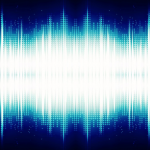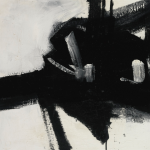2018
In this essay, John Barber argues that sound suggests a new and valuable way of approaching and considering Arabic electronic literature. Based on the oral histories of Arab cultures, the use of sound in Arabic electronic literature provides a way of knowing and being in a literary world, real or imagined. Sound makes readers re-think their relational experiences with others, with themselves, and the spaces and places they inhabit. These shifting relationships promote interesting opportunities for Arabic electronic literature.
2013
Reviewer Tim Keane suggests that Pete Townshend’s memoir Who I Am captures the tension animating The Who’s career, the duality of autobiographical blues and (art-school inspired) auto-destruction. But, Keane suggests, the book also articulates the written autobiography’s inevitable (if sometimes interesting) failure to achieve the “ex-static” atemporality of music. “I Can’t Explain" ends up telling us more about Townshend’s soul than Who I Am.
2007
As I thread my way through ebr, I touch base with the artificial intelligentsia that my work circulates in. The artificial intelligentsia is an internetworked intelligence that consists of all the linked data being distributed in cyberspace at any given time, one that is powered by artistic- intellectual agents remixing the flow of contemporary thought.
2006
Trace Reddell introduces Sonic Contents.
Erik Davis listens to Lee Perry's work.
tobias c. van Veen reviews Paul D. Miller a.k.a. Dj Spooky that Subliminal Kid's MIT publication, Rhythm Science.
David Rothenberg writes of the affective and effective power of reverb.
Erik Davis discusses the relationship between electronic sound and environment.
James Riley on Jack Kerouac.
From event to non-event. Frank Seeburger deconstructs 9/11.
Marcus Boon explores the healing of traditional music.
2005
Tim Keane on rock'n'roll awakenings and the lyrical existentialism of U2 (St Patrick's Day Special, 2005)
2004
Larry McCaffery reframes his 1989 essay on the "postmodern turn" in rock'n'roll music.
2002
Against the notion that music is the most abstract of art forms, Olivia Block thinks of music as a language with its own vocabulary of sounds, patterns, rhythms, notes. On the day of a performance in Kyoto, Japan, these reflections alter Block's sense of her own language, English, deconstructed by Japanese advertisements, tee-shirts, "American" candy-bar wrappers, and text-cell phones.
graphics: Artists Rights Society; Performance for MIDI keyboard, pianola configurations, and click-track:G. Schirmer Rental; studio portrait of Hedy Lamarr: Roy George and Associates.
2001
In her Sonic Spectrum survey, Elise Kermani invited readers to locate sounds on the spectrum from noise to sound to music. Here, Skip LaPlante responds with an autobiography in music, sound, and noise.
noise poem: Raymond Federman. audio recording and production: Eric Dean Rasmussen and Shaun Sandor
Paul C. Rapp, Esq., a.k.a. Lee Harvey Blotto, on the legal, cultural, and economic dimensions of the Napster controversy circa Y2K.
With his software groovebox, Trace Reddell applies the tools and strategies of the DJ to the performance of literary interpretation and critical speculation.
The msn thread originated in the Fall of 2001 as an ebr special co-edited by Cary Wolfe, Mark Amerika, and Joseph Tabbi.

